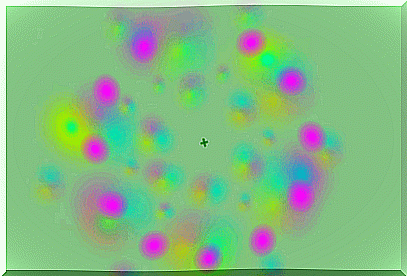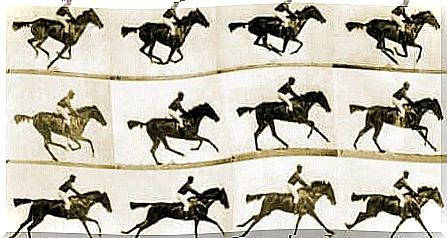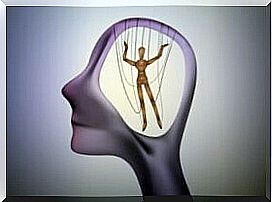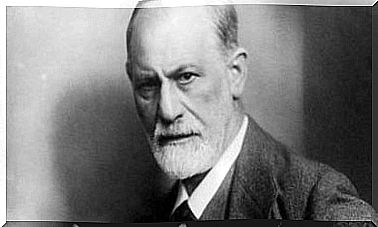The Phi Effect, The Optical Illusion Created By The Brain

The phi (φ) effect is an optical illusion that our brain generates: it makes us believe that a fixed figure is in motion. The Gestalt school defined and coined this term in 1912, a concept that demonstrated something important: perception goes beyond our senses. Beyond what we see or feel, there is a simple interpretation of our brain.
The subject is more interesting than it seems. We are all struck by these images where the most diverse shapes and colors seem to move timidly in front of us… Knowing that this movement is not real supposes a small shock which forces us to wonder about several things.
Knowing that the perceived stimulus does not match the actual stimulus first makes us think that something is wrong with us. Are these our senses? Is it a vision problem? Not at all.
However, as the American neuroscientist David M. Eagleman, author of the book Incognito, the Secret Lives of the Brain , points out, the first lesson we must learn about our senses is that we must not trust them. Just because we can see something with our eyes does not mean that something really exists.
The brain interprets, constructs and reconstructs, invents and introduces axioms into our mind. And this, to try to make sure that everything has a certain logic. Especially when he perceives, for example, that there are flaws or gaps in what he sees. This type of discovery was the key to the development of Gestalt.

The phi effect (φ), pillar of Gestalt
It was Max Wertheimer (1880-1943) founder of the Gestalt school who first described the so-called phi effect in the field of science. He did this through a study called Experimental Studies on the Perception of Motion (1912) in which he laid the foundations for the psychology of perception.
So, and as in most discoveries, chance led Dr. Wertheimer to find a strobe in a train station. After this curious discovery, he wondered what had created this fascinating phenomenon.
He knew that this game of geometric figures was not in motion. Yet his eyes told him that was so. He called this fact “phenomenon φ” to distinguish it from β (beta), where a stimulus has a real and logical capacity to move. Dr Wertheimer wanted to understand what was the cause.
Phi effect and wrong movement, a brain error?
The phi effect differs in several ways from classic optical illusions. To begin with, there is usually a succession of similar figures. These are still images. However, if these images are reproduced before our eyes one by one and at a certain speed, we will have the feeling that they are moving, when in reality they are not moving.
- Max Wertheimer has shown that if we show a succession of static images at a specific speed, our brain sees movement.
- This phenomenon is linked to retinal persistence. This concept is based on the idea that images remain “imprinted” on our retina for a small fraction of a second. If we quickly pass many images in front of the human eye, the brain will not be able to differentiate one figure from another in isolation.
- This means that he ends up interpreting (wrongly) that it is the same moving object.
It should be noted that this research by Max Wertheimer and his theory of the phi effect contributed to the development of cinema with the famous photograms. It was Hugo Münstenberg who took an interest in this idea to give it shape in 1916.

The starting point of the Gestalt school
The phi effect is not really Max Wertheimer’s innovation in the world of scientific psychology. In fact, in the field of photography, this type of perceptual experience was already known. One of the best known representatives is the British photographer Eadweard Muybridge (1830-1904).
His work was revolutionary for its time. In 1878 Muybridge had already invented what he called chronophotography.
One of his best-known works traces the movements of a horse and its rider during a race through the use of 24 cameras aligned on the track. After obtaining and developing the images, he knew that exposing them at a certain speed would generate real movement.
While for some this phenomenon was not new, Wertheimer’s work within Gesltalt changed everything. This school of psychology laid the foundation for the study of sensation and perception. For theorists like Wertheimer himself as well as for Wolfgang Kohler or Kurt Koffka, what we perceive are not isolated stimuli.

In fact, the brain always tends to bring together everything we see, to create a whole governed by a sense of coherence and an interpretive logic. He thus chooses, for example, to think that this succession of images corresponds to the same moving object. Understanding it this way saves effort: it’s easier.
However, and here is the problem, it is not real. As neuroscientist David M. Eagleman says, it never hurts not to trust 100% everything the brain makes us believe …










